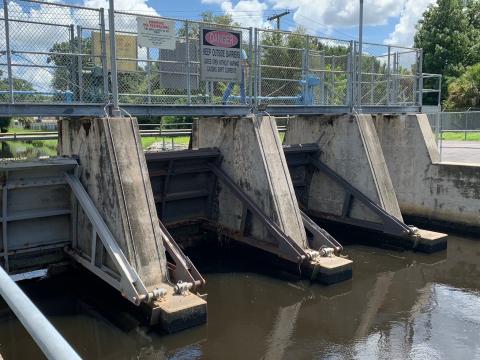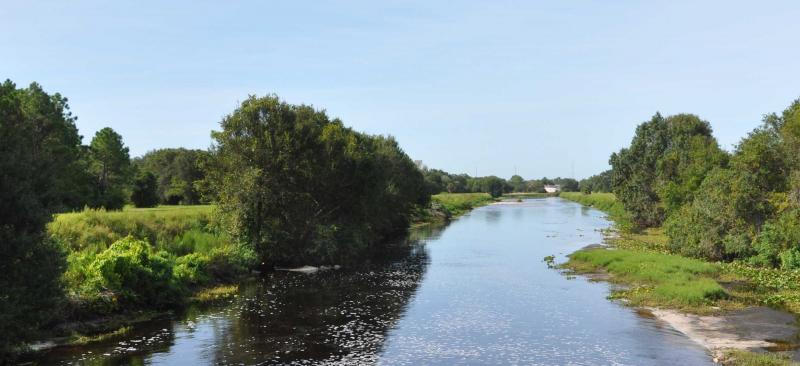The study evaluated if opening the water control structures on Channels A and G would improve natural systems and water quality in the channels and ultimately Old Tampa Bay.
Project Overview

In 2014, the District, in partnership with the Tampa Bay Estuary Program, conducted a pilot study on Channels A and G, located in northwest Hillsborough County (see map). The goal of the study was to determine whether opening the channels’ two water control structures would improve natural systems and quality of water flowing into Old Tampa Bay, where water quality and seagrass coverage was a concern.
As part of the study, the structures were opened June 2014, and data was collected for two years that observed changes in the ecosystems along the channels. The study was concluded in June 2016 and the results showed that opening the structures on Channels A and G allowed tidal flushing upstream, which did change the ecology within the channels and quality of water flowing through the channels and into Old Tampa Bay improved.
Channels Opened Permanently
As a result of observed improvements, the District removed the gates from the water control structures in 2021, effectively decommissioning the water control structures and permanently opening the channels.
Project Background
The following provides a summary of observations from the 2014-2016 study:
Water Level and Quality Changes Observed
- Water levels upstream of the water control structures are lower and fluctuate more frequently with the tide and rainfall events.
- Tidal fluctuations in water levels expose more channel bottom sediments during portions of the day.
- Water pumped directly from the channels increased in saltiness and therefore pose a risk to irrigation of lawn and plants around your home. It is recommended to stop using channel water for irrigation due to the risk of damaging plants that have a low tolerance for saltwater.
- Increased saltiness in the water above the water control structures changes the types of vegetation along the channels’ shorelines.
Habitat Changes Observed
- Within the channels upstream of the structures, shoreline vegetation became more saltwater tolerant. This means that freshwater-only vegetation may die-off while the structures are left fully open.
- Saltwater-tolerant plants may appear on the shorelines upstream of the structures. Saltwater-tolerant plants provide critical nursery habitat to bay-dependent fish, crabs and wildlife.
Benefits to Tampa Bay
- The opening of the structures alleviates periodic water releases during rainfall events and results in a more natural connection to greater Tampa Bay.
- Frequent tidal exposure of the sediments within the channels allows for a reduction of nutrients flowing into Old Tampa Bay. These nutrient-rich materials would otherwise discharge directly to Old Tampa Bay and pose potential problems downstream in greater Tampa Bay.
- Reduced nutrients in the water flowing from the channels into Old Tampa Bay increases the likelihood that the bay’s water clarity and quality will improve.
- Improved water clarity and quality in Old Tampa Bay can allow for underwater seagrasses to grow and expand, creating additional habitat for fish and wildlife in greater Tampa Bay.
Benefits to Fish and Wildlife
- Without a restricted connection to Tampa Bay, the channels and Rocky Creek will better serve as prime nursery habitat for a variety of fish and wildlife common to Tampa Bay.
- Oysters and barnacles may be able to move upstream into the channels, which help filter nutrients out of the water.
- Bay-dependent birds and animals, such as dolphins and manatees, are able to forage in areas upstream of the open structures.

